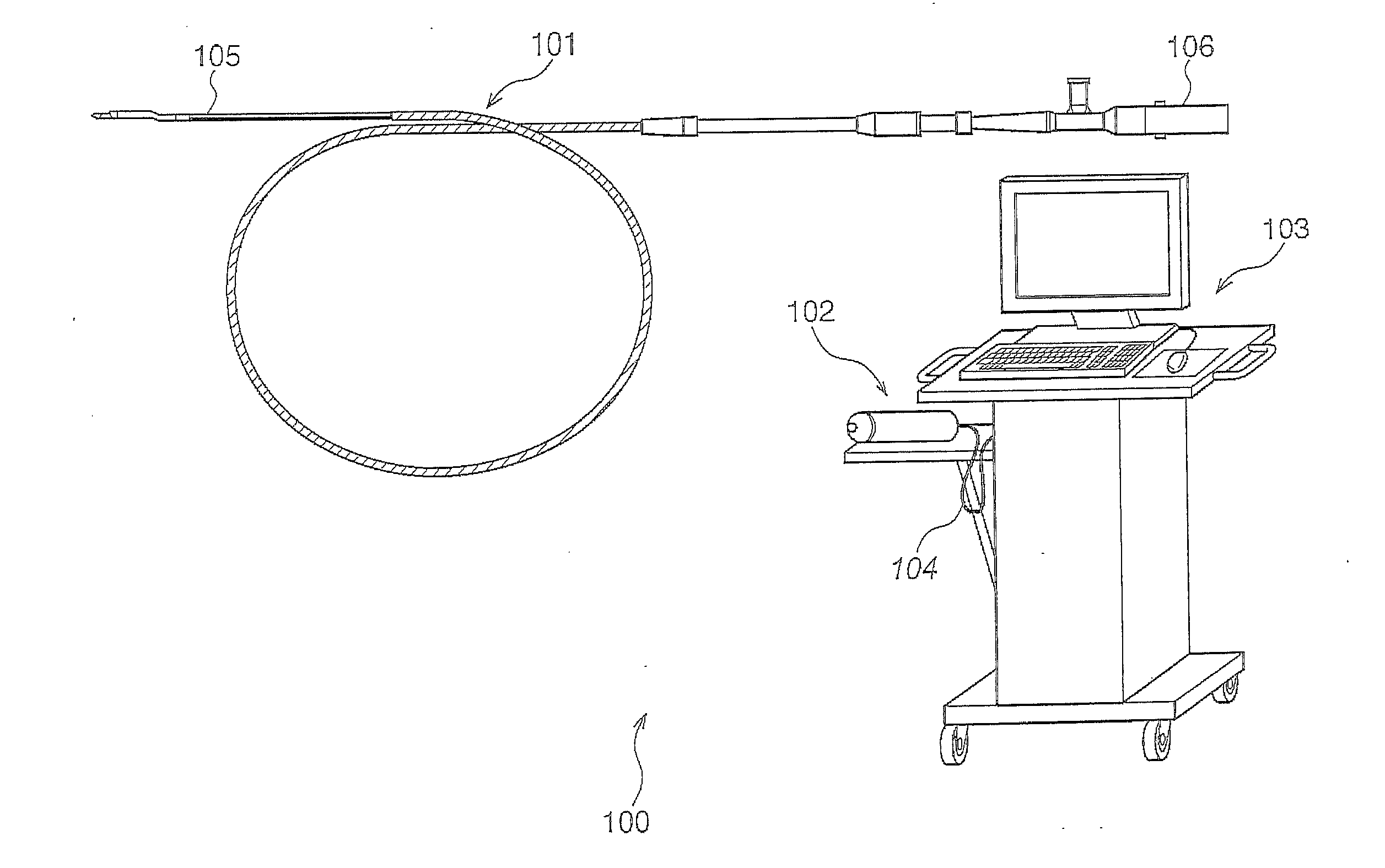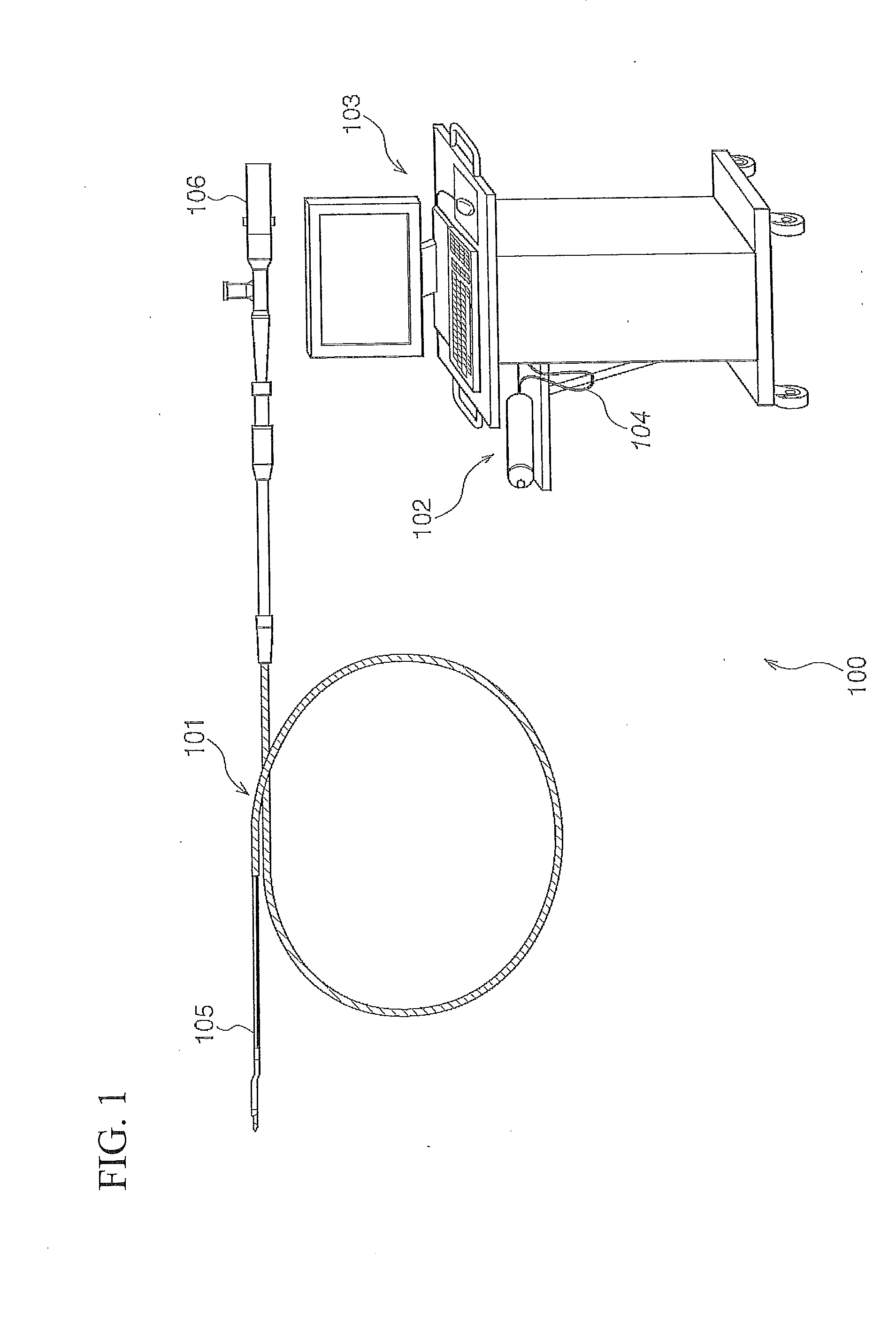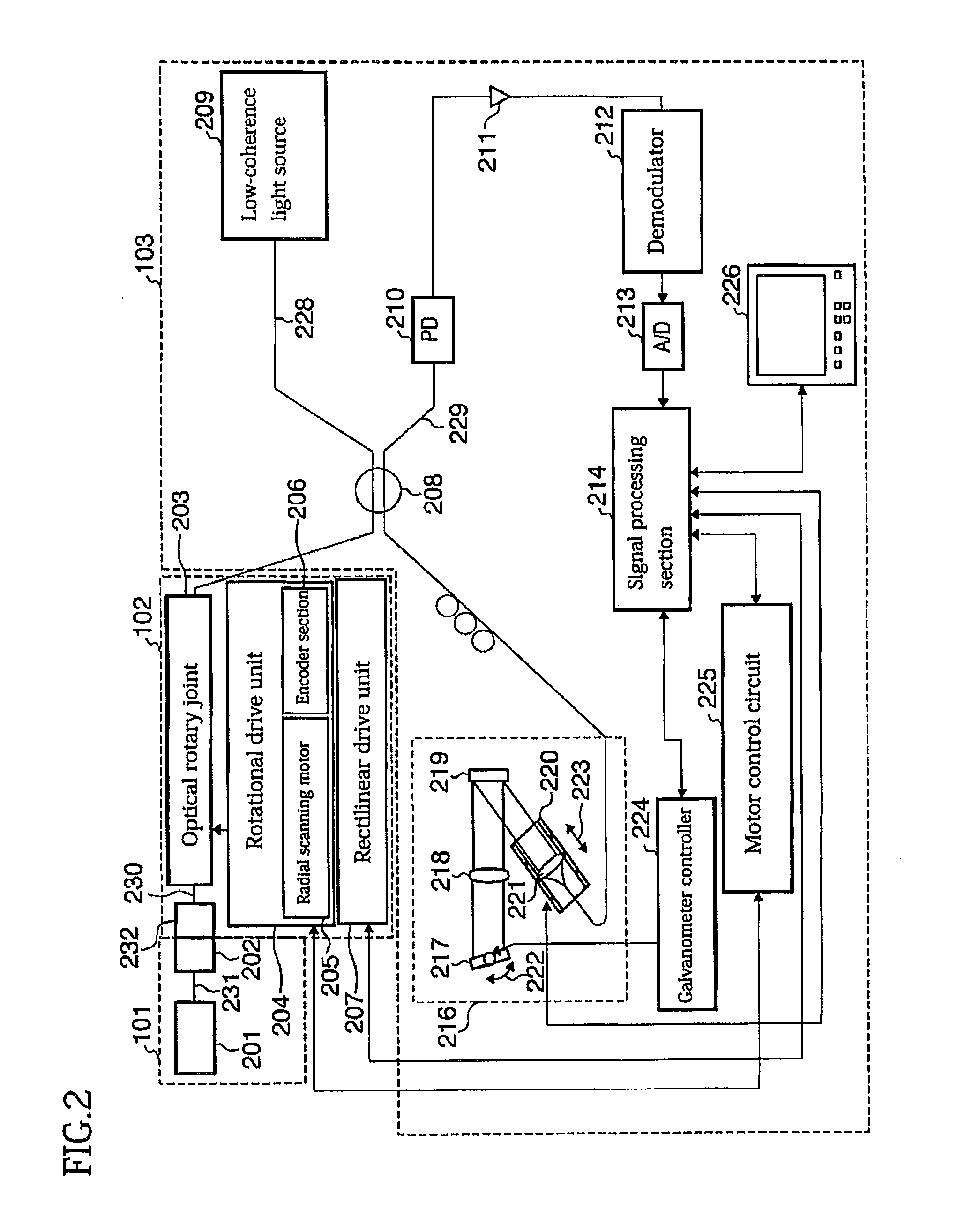Optical probe
a technology of optical probes and probes, applied in the field of optical probes, can solve the problem that the resolution in the azimuthal direction cannot be enhanced, and achieve the effect of improving the resolution
- Summary
- Abstract
- Description
- Claims
- Application Information
AI Technical Summary
Benefits of technology
Problems solved by technology
Method used
Image
Examples
first embodiment
1. Configuration of Optical Coherence Tomography Apparatus
[0066]FIG. 1 illustrates the overall appearance and configuration of an optical coherence tomography apparatus 100 disclosed here including a catheter device according to a first embodiment disclosed here.
[0067]As shown in FIG. 1, the optical coherence tomography apparatus 100 includes a catheter device 101, a scanner and pull-pack unit or section 102, and an operation controller 103. The scanner and pull-back section 102 and the operation controller 103 are connected to each other by a signal cable 104.
[0068]The catheter device 101 is inserted directly into a blood vessel, and measures the condition in the blood vessel by use of reflected light of coherent light emitted via an optical component. The scanner and pull-back section 102 is connected to a connector 106 of the catheter device 101, and effects radial scanning of a drive shaft 105 inside the catheter device 101.
[0069]The operation controller 103 is configured to per...
second embodiment
[0122]The reflecting surface 601 of the prism 308 in the first optical component 305 is a convex surface facing outwards in the azimuthal direction in order to cancel the concave lens effect of the catheter sheath 301 in the above-described first embodiment. However, the disclosure here is not particularly limited to or by this configuration. For example, an outgoing surface of the prism 308 may be formed as a convex surface facing outwards in the azimuthal direction.
[0123]FIGS. 11-13 illustrate parts of a first optical component 1100 of a catheter device according to this embodiment.
[0124]As shown in FIGS. 11-13, in the first optical component 1100, a prism (deflector) 1101 includes a reflecting or deflecting surface 1102 for a light beam that is a flat surface, whereas an outgoing surface 1103 for the light beam is formed as a convex surface facing outwards in the azimuthal direction. The outgoing surface 1103 of the prism refers to the surface of the prism through which the light...
third embodiment
[0134]The catheter device including the first optical component has been described above in connection with the first and second embodiments, though the device is not limited in this respect. In a catheter device including a second optical component, similarly the resolution in the azimuthal direction of the cross-sectional image can be enhanced.
1. General Configuration of Second Optical Component and Light Beam Ray Trajectories
[0135]A general configuration of the second optical component in the catheter device according to this embodiment and the ray trajectories in the process up to the emission of a light beam through the second optical component are described below.
1.1 General Configuration of Second Optical Component
[0136]FIG. 15 illustrates as a cross-sectional view in a sideways direction a distal part of a drive shaft 105 at a distal portion of the catheter device 101. FIG. 15 shows that the distal portion of the catheter device 101 has a configuration in which the drive sha...
PUM
 Login to View More
Login to View More Abstract
Description
Claims
Application Information
 Login to View More
Login to View More - R&D
- Intellectual Property
- Life Sciences
- Materials
- Tech Scout
- Unparalleled Data Quality
- Higher Quality Content
- 60% Fewer Hallucinations
Browse by: Latest US Patents, China's latest patents, Technical Efficacy Thesaurus, Application Domain, Technology Topic, Popular Technical Reports.
© 2025 PatSnap. All rights reserved.Legal|Privacy policy|Modern Slavery Act Transparency Statement|Sitemap|About US| Contact US: help@patsnap.com



